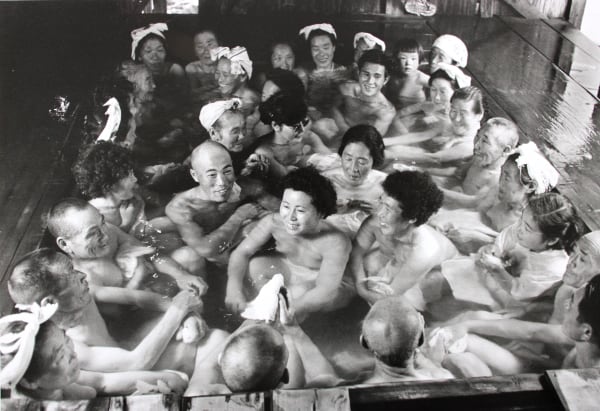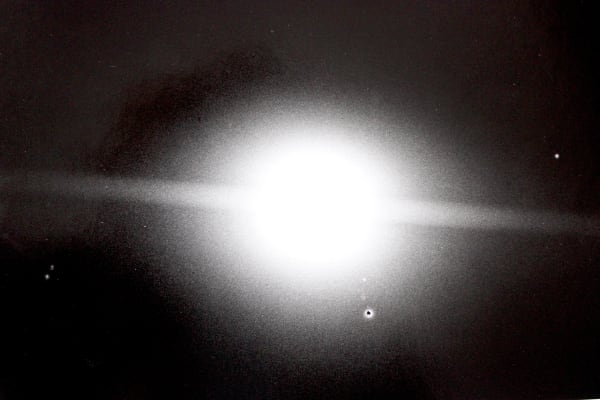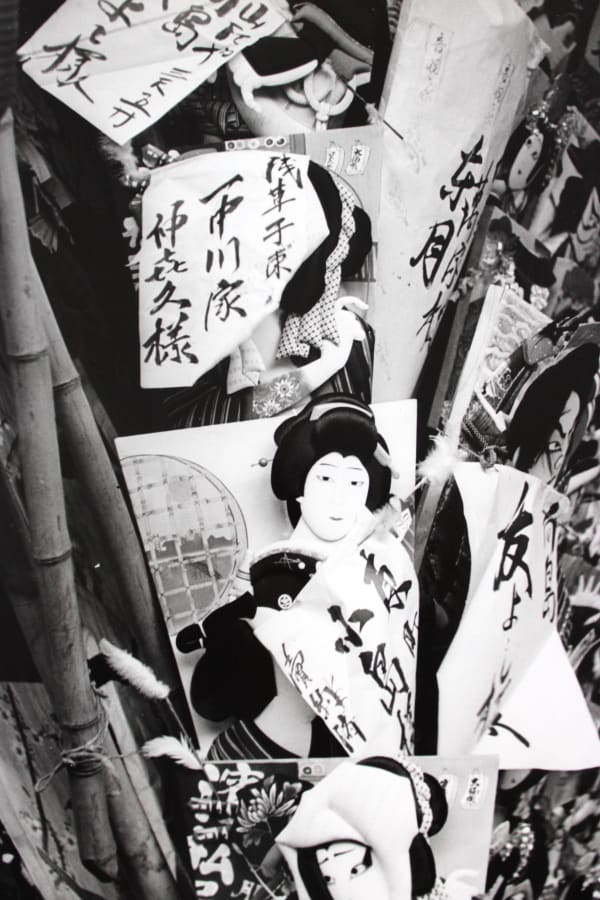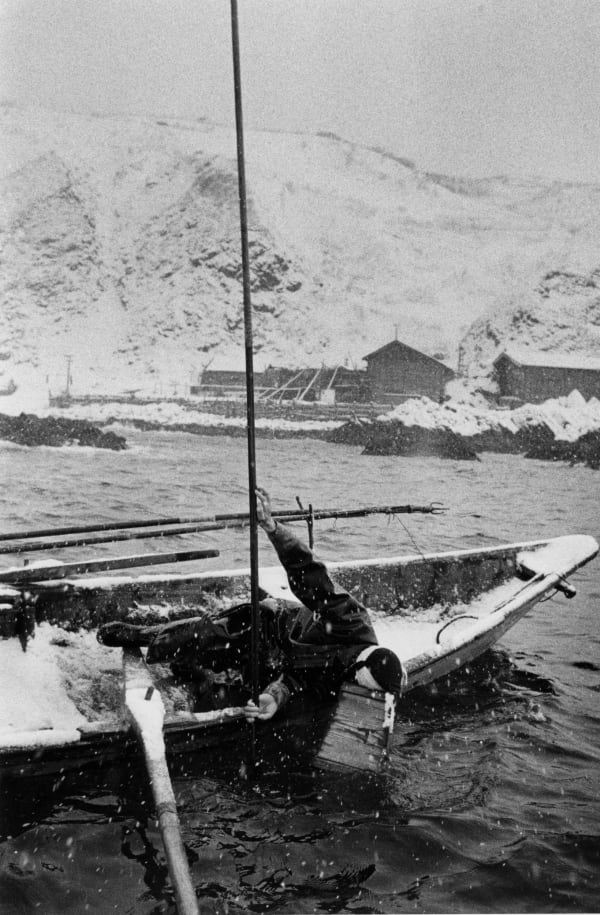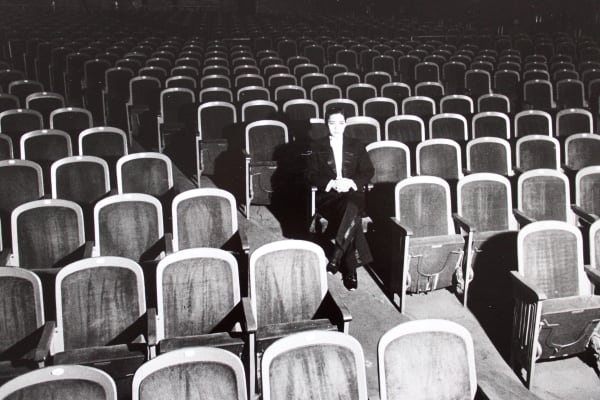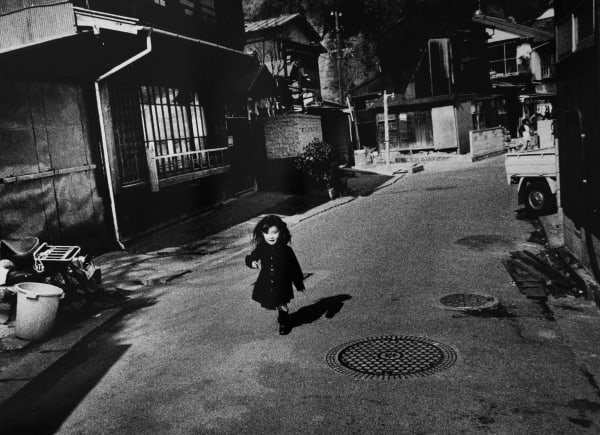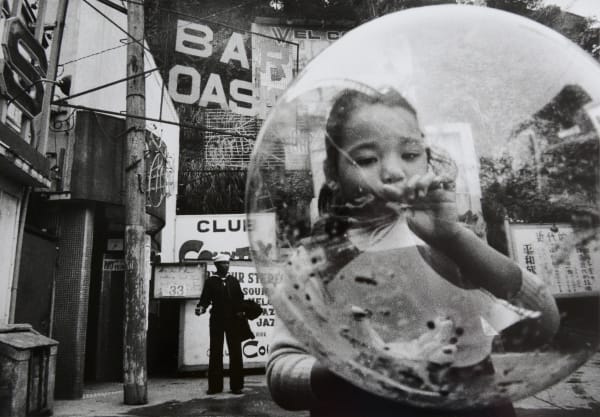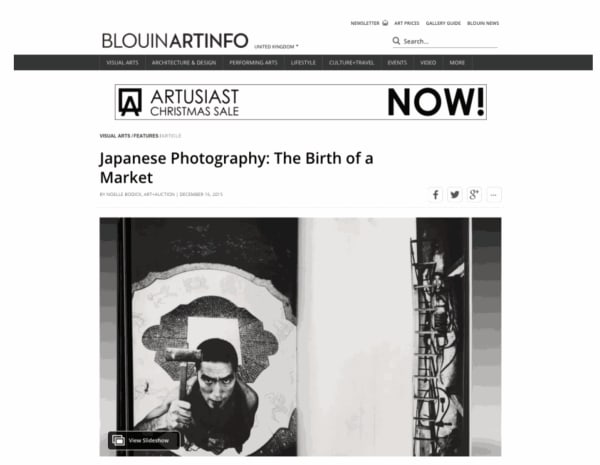Works
-
 Women taking a hot spring cure, Sukayu Onsen, Aomori, 1957
Women taking a hot spring cure, Sukayu Onsen, Aomori, 1957 -
 Yachi Onsen Hot Spring, Aomori, 1957
Yachi Onsen Hot Spring, Aomori, 1957 -
 Woman hurrying home on a snowy road, Aomori, 1955
Woman hurrying home on a snowy road, Aomori, 1955 -
 The sun on the day of defeat, Takada, Niigata, 1945
The sun on the day of defeat, Takada, Niigata, 1945 -
 Munakata Shikō, wood-block artist, Niigata, 1951
Munakata Shikō, wood-block artist, Niigata, 1951 -
 Battledore Fair held on New Year’s Day, Asakusa, Tokyo, 1939
Battledore Fair held on New Year’s Day, Asakusa, Tokyo, 1939 -
 Common well, Oga Peninsula, Akita, 1955
Common well, Oga Peninsula, Akita, 1955 -
 A woman in a straw raincoat, Tokamachi, Niigata, 1956
A woman in a straw raincoat, Tokamachi, Niigata, 1956 -
 A Woman Planting Rice, Toyama, Japan, 1957
A Woman Planting Rice, Toyama, Japan, 1957 -
 A woman performing the tea ceremony
A woman performing the tea ceremony -
 Fisherman Spearing Fish, Hokkaido, Japan, 1957
Fisherman Spearing Fish, Hokkaido, Japan, 1957 -
 Mizunoe Takiko, star of a girls’ review, at her final show at Kokusai Theater, Asakusa, Tokyo, 1938
Mizunoe Takiko, star of a girls’ review, at her final show at Kokusai Theater, Asakusa, Tokyo, 1938 -
 Revue girls, Nichigeki Theatre, Yurakucho, Tokyo, 1938
Revue girls, Nichigeki Theatre, Yurakucho, Tokyo, 1938 -
 Man selling newspapers, Beijing
Man selling newspapers, Beijing
Biography
Born and raised in Tokyo, Hiroshi Hamaya is one of the most eminent Japanese documentary photographers of the 20th century. Working as an aeronautical photographer and a freelance contributor to magazines during the 1930s, Hamaya began his career documenting his hometown from the sky and the streets.
An assignment in 1939 gave Hamaya the opportunity to travel to the rural coast of the Sea of Japan, where he became interested in documenting the traditional customs of its people and the austere climate of the region. Over the next two decades, he recorded life in remote coastal prefectures, developing a more humanist, ethnographic approach toward photography. In the early 1950s, Hamaya settled in the seaside town of Ōiso, where he began to review his body of work and put together his first photobooks.
Later in his career, Hamaya would return to the sprawling urban labyrinth of his youth, to chronicle Tokyo’s massive demonstrations against the renewal of the US-Japan Security Treaty in 1960. The resultant photobook, Record of Anger and Grief (1960), would become one of the most famous exemplars of Japan’s post-war visual culture of protest.
Aside from his political reportage photography, Hamaya completed a series of landscapes, travelling within Japan and abroad: 'I came to realize that natural features in Japan, like the nature of its people, were extremely diversified and complex. I intended to investigate this conclusion with my own eyes.'
Hamaya was the first Japanese photographer to join Magnum, and his work was amongst the only Japanese contributions to Edward Steichen’s groundbreaking photography exhibition, The Family of Man (1955). His accolades include the Master of Photography Award from the International Centre of Photography, New York (1986) and the 1987 Hasselblad Award.
Hamaya's works are included in renowned private and public collections worldwide, including the Museum of Modern Art, New York, and the British Museum, London. He was honoured with a two-man show at the J. Paul Getty Museum (2012), and has also been the subject of a major solo retrospective at the Tokyo Metropolitan Museum of Photography (1993).
Exhibitions
-

MIA Foto Fair
Milan, 20 - 23 March 19 - 23 Mar 2025Read more -

Photo London
Somerset House • Stand W02 10 - 14 May 2023Michael Hoppen is pleased to return to the 8th edition of Photo London with an exciting selection of works by iconic contemporary artists as well as newly-released works.Read more -

Frieze Masters 2022
Regent's Park • Stand A08 12 - 16 Oct 2022At Frieze Masters 2022, we are delighted to be exhibiting key works by members of the iconic generation of Japanese photographers who rose to prominence during the post-war period. The...Read more -

The Photography Show, AIPAD 2022
Center415 • Stand 222 20 - 22 May 2022After what seems like an eternity, we are so looking forward to once again being in New York for The Photography Show presented by AIPAD. To be amongst you, our...Read more -

PARIS PHOTO NEW YORK 2020
ONLINE FAIR 2 - 5 Apr 2020Read more -

Paris Photo 2019
Grand Palais • STAND C9 7 - 10 Nov 2019Michael Hoppen Gallery will be showing a solo booth of Tim Walker at this years Paris PhotoRead more -

Shashin: are-bure-boke
14 Sep - 16 Nov 2018An exhibition of Japanese photographic mastersRead more -

PARIS PHOTO 2017
Grand Palais • Booth C10 9 - 12 Nov 2017Michael Hoppen Gallery will be at Paris Photo, 2017, booth C10.Read more -

PARIS PHOTO 2016
GRAND PALAIS • Booth C10 10 - 13 Nov 2016Michael Hoppen Gallery will be showing at this years Paris Photo. Bringing an exquisite selection of rare and beautiful photographic prints.Read more -

AIPAD 2015
New York 16 - 18 Apr 2015Art Fair, New York, London, Art, April, ContemporaryRead more
News
-

Photo London 2023
Michael Hoppen's Highlights May 10, 2023Michael Hopen Gallery is delighted to return to Somerset House for the 8th edition of Photo London. For this year's edition, we are proud to...Read more -

Frieze Masters 2022
Michael Hoppen's Highlights October 10, 2022Michael Hoppen Gallery is delighted to be exhibiting at Frieze Masters 2022, with key works by members of the iconic generation of Japanese photographers who...Read more -

Hiroshi Hamaya | A Studio Visit
April 8, 2020Dear Friends, Visiting a photographer's ‘inner-temple’, better known as their darkroom or archive, has always been a privilege. If one is fortunate enough to be...Read more -

MHG Newsletter '16
Michael looks ahead to an exciting year for the gallery February 23, 2016The Michael Hoppen Gallery newsletter summarises the year ahead for the galleryRead more -

Japanese Photography: The Birth of a Market
Michael Hoppen talks to Blouin Art Info December 16, 2015Michael Hoppen talks to press about the Japanese photography and our long term partnership with many of the greatest post-war photographers.Read more
Enquire

